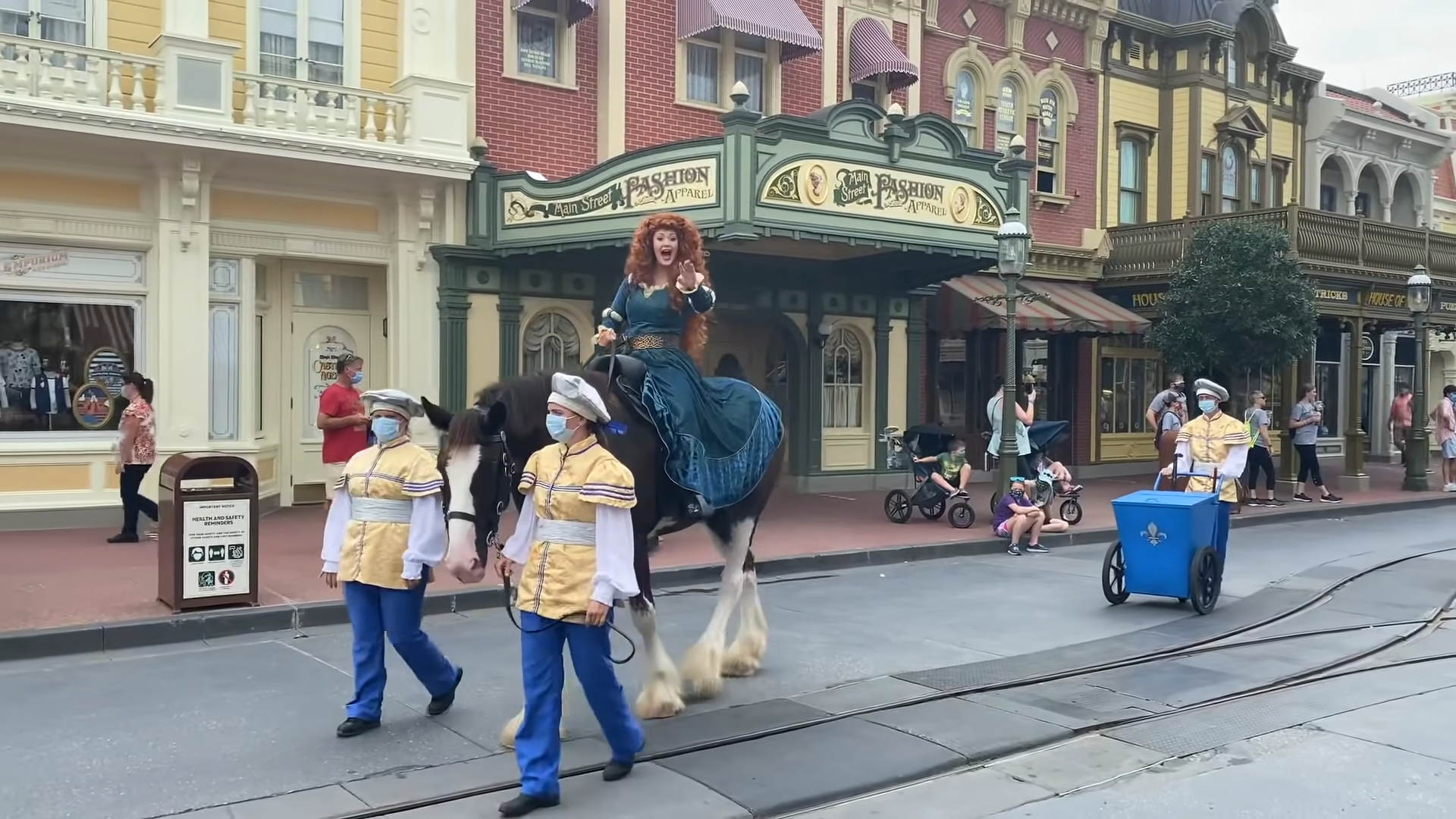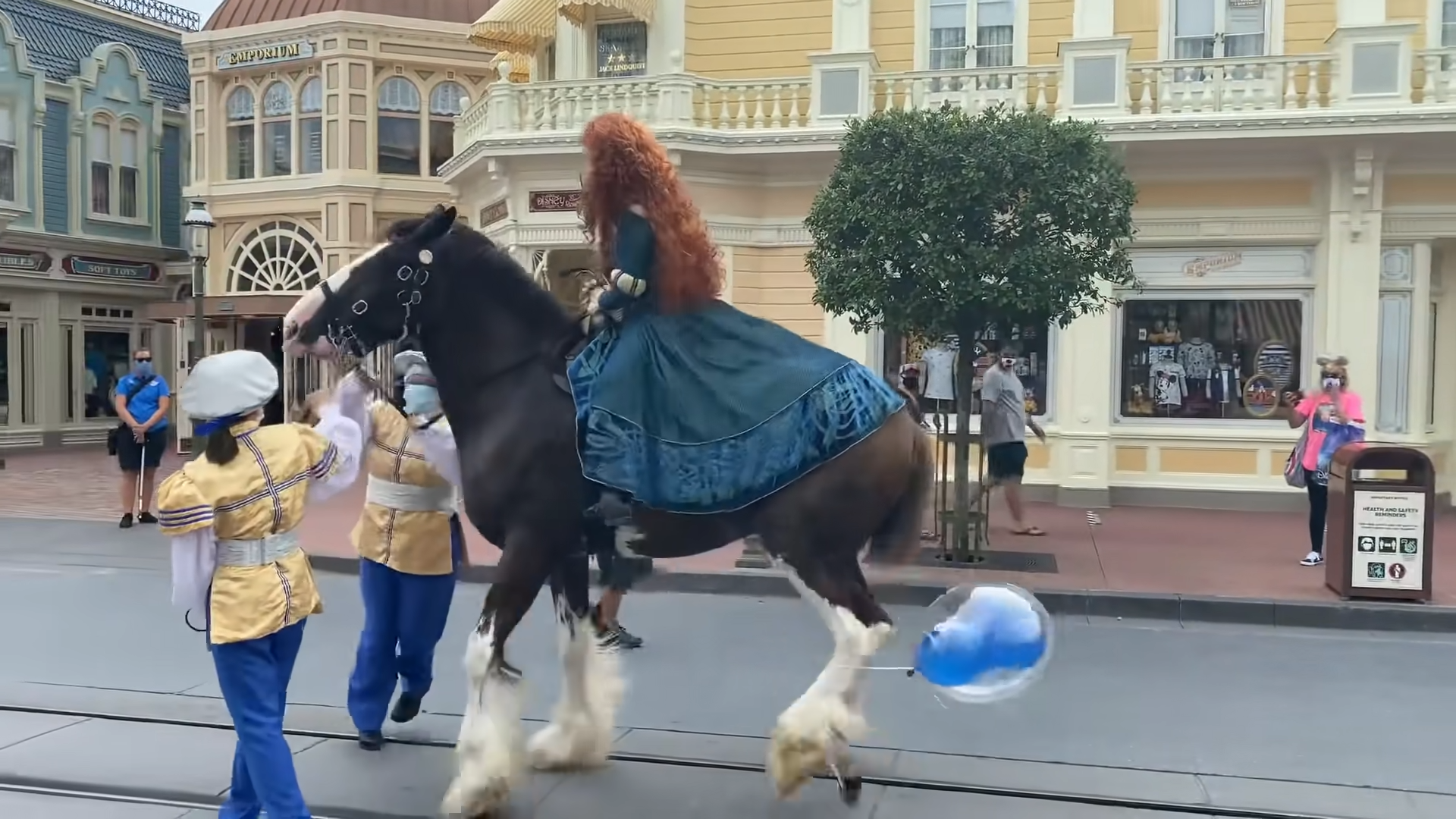How do you handle complicated situations that involve your horse? We can take an example from these employees. They managed to handle very well the situation where Merinda’s horse got caught in a balloon at Disney World Magic Kingdom During Small Princess Parade. Also, a toddler ran out into the parade route. The father grabbed the toddler to safety, but the balloon the toddler was carrying kept going into the route and spooked the horse. But luckily, Merinda, her horse, and the toddler were ok after all that happened at that parade.

During a stressful situation, a horse may exhibit many of the same physical signs that a person does when they are stressed. The horse’s heart rate and breathing increase and they may begin to sweat.
A nervous or stressed horse will press his tail down, and he may tuck in his hindquarters. This is a good time to reassure him and try to build his confidence. If your horse clamps his tail when you are riding, he may be in discomfort or pain. You need to make sure he’s sound and his tack fits well.
 Stress produces free radicals that potentially damage every tissue in the body, including the brain, blood vessels, hooves, eyes, skin, and digestive tract. Stress also contributes to a horse’s poor attitude. Limiting stressors helps prevent ulcers, laminitis, and colic, and promotes an amiable, willing attitude.
Stress produces free radicals that potentially damage every tissue in the body, including the brain, blood vessels, hooves, eyes, skin, and digestive tract. Stress also contributes to a horse’s poor attitude. Limiting stressors helps prevent ulcers, laminitis, and colic, and promotes an amiable, willing attitude.

Just as humans experience stress in situations that are physically or mentally challenging, horses also experience stress as a natural response to changes or challenges in their environment. In some situations, stress is a helpful reaction that allows horses to cope or adapt.

But, by being aware of what triggers stress and by recognizing the causes and effects of stress on horses, you can take steps to keep your horses healthy and happy and you also can take steps to relieve their stress and create a happier environment.
